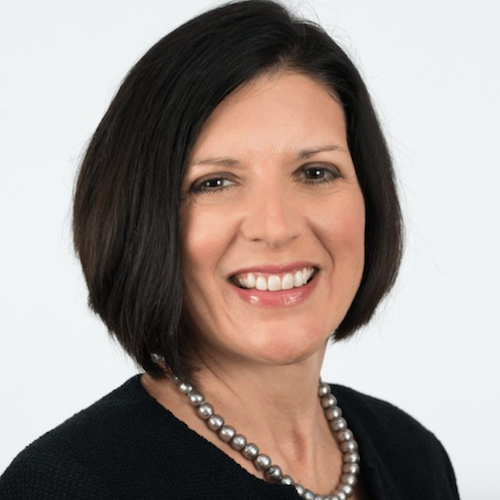Brookdale Senior Living’s third quarter saw record move-ins and positive trends in occupancy growth and net hires, President and CEO Cindy Baier said Tuesday during the company’s latest earnings call.
“We do think that we are at the beginning of a ‘super cycle,’ where we have occupancy growth and strong rate performance,” Executive Vice President and Chief Financial Officer Steve Swain said.
11 months of occupancy growth

Baier said the Brentwood, TN-based company “is on the strong path of occupancy recovery.” Since March 2021, the company has seen occupancy improve by 780 basis points, she said.
Brookdale ended the quarter in September with its 11th consecutive month of year-over-year growth in occupancy. “In fact, on a same-community basis, the third quarter saw the most quarterly move-ins in the company’s history,” Baier said.
Weighted average occupancy increased 390 basis points in the third quarter compared with the same period in 2021, and it increased over the second quarter of 2022 by 180 basis points, according to the CEO.
“As reported by [the National Investment Center for Seniors Housing & Care], the industry’s third-quarter senior housing occupancy increased 110 basis points on a sequential basis. We are delighted that Brookdale again exceeded industry growth,” Baier said.
Looking to the fourth quarter, Swain said that Brookdale expects the improvements to continue.
“While historically the fourth-quarter sequential occupancy trend was flat, this year we expect to deliver over 50 basis points of sequential growth,” he said. “On a year-over-year basis, we expect the fourth quarter to be well over a 300-basis-point improvement.”
Contract labor use declines more than 40%
Third-quarter total labor costs increased 1% compared with the second quarter, executives reported.
Brookdale’s use of contract labor declined more than 40% from the second to third quarter, Baier said, noting that the company’s use of contract labor peaked in December 2021. The company also ended the quarter with 11 consecutive months of positive net hires, which the CEO said is “the most effective thing that we have done to drive that improvement” in the use of contact labor, which she noted comes at a premium.
“Year-to-date, our net hires exceeded 4,500, increasing our employed workforce by 14% since year-end,” she said. “A large and consistent Brookdale workforce is good for our residents, because the culture of caring and relationships between residents and our associates are part of the many benefits of senior living.”
But Baier said that the company’s progress on the labor front “is slower than expected.”
“Associate turnover remains elevated, and we are working to reduce it, which will decrease training costs and improve workforce productivity,” she said. Competition for workers remains “fierce,” Baier noted, meaning that wage pressure continues.
“One of the realities that we face is, the pandemic has been particularly hard on healthcare and senior living, and so we have seen an elevated turnover rate,” Baier said. “What we need to do is bring that back down, so we are very focused on that.”
Toward that end, she said, Brookdale has increased employee compensation to ensure that the company is paying appropriate market rates. Also, Baier said, the company is examining its benefits packages and “giving career pathing opportunities that are unmatched in our history” to workers — for instance, prepaying training costs for workers to become certified nursing assistants or med techs so people can advance in their careers without leaving the company.
“I want to keep hiring associates until we are able to staff as many hours using regular wages as possible,” she said, “and the reason that that is not an absolute number of people is because the workforce has changed compared to the pre-pandemic. People want to work when they want to work, where they want to work and how they want to work. So even if you’ve got the same number of associates, they may not work as many hours if they are part-time.”
Some workers have a need to quarantine, too, she said, which means that more workers are needed to staff communities.
“But that doesn’t mean more costs,” Baier said. “What we should have as we stabilize is, we should have a lower cost per hour, because we are working to eliminate that premium labor. And that’s the play that we are trying to make.”
Same-community labor expenses were up 11% year-over-year in the third quarter, Baier said.
“Part of that was rate, and part of that was occupancy,” she said. “I think that we made significant wage increases, as have others in our industry, during the fourth quarter of 2021 and throughout 2022. I do think that the rate increase will be less in 2023.” Baier noted, however, that the company is in the process of setting its budget and must respond to the labor market as appropriate.
“Unlike other healthcare settings, we don’t really have the option of shutting down and reducing beds — our residents live with us,” she said. “So we need to make sure that our communities are appropriately staffed, and the most efficient way to do that is with full-time and part-time Brookdale associates working regular hours.”
Once the workforce is stabilized, Swain said, “we expect further reductions in contract labor, lower overtime and improved productivity.”
Rates to increase by more than 10%
Average in-place resident rate increases, effective Jan. 1, will be more than 10% and will incorporate expected labor and inflationary cost increases, Swain said.
“We set each and every resident rate individually,” Baier said, adding that executive directors meet with residents to explain why the rate — which has two components, rent and care — is increasing.
Market rate increases for new residents began Oct. 1, so the financial effects of those increases could show up in fourth-quarter results, Baier said.
“We are always balancing occupancy and rate, and our belief is that if we charge fair rates for our services, that will not be a barrier to growing occupancy, particularly in a setting where there is new supply growth,” she said. “The silver lining of the pandemic is that people have put less new units under construction, and that is very positive for us. At the same time, there is unprecedented demand for the seniors who need the care that we provide.
“We think those two things going together will help us continue to grow our [revenue per available room] and ultimately translate into improved adjusted [earnings before interest, taxes, depreciation and amortization] and better cash flow.”
Hurricane Ian affects 70 communities

Seventy-seven Brookdale communities were in the path of Hurricane Ian late in the quarter, and 70 of them ultimately were affected, according to Baier and Swain.
Baier said it was the fifth most powerful storm ever to make landfall in the US. “It was a slow-moving storm, which caused widespread destruction,” she said.
Nine Brookdale communities were evacuated, and 85% of the residents in them chose to relocate temporarily to other Brookdale communities in Florida, Baier said, adding that all affected residents have returned to their original communities.
Swain said that the hurricane did approximately $7 million in damage to Brookdale facilities. And the effects extended beyond buildings.
“We probably lost about 40 move-ins at the end of September from people who were in the process but didn’t move in that last week of September,” Baier said. “And then when you relocate residents or when families have personal catastrophes, you may lose some residents because their family has moved away.”
But the CEO said that Brookdale is seeing “strong” move-in activity in Florida. “We usually do see that after a hurricane,” she added.
Big downsizing done
In June 2018, Baier said the company might reduce the number of communities in its portfolio by at least 20% over the next two or three years.
At the time, Brookdale operated approximately 1,010 communities. Today, the company operates 641 communities, including 346 that it owns and 295 that it leases, plus it manages 31 additional communities. It remains the largest senior living community operator in the United States, according to the American Seniors Housing Association and Argentum.
Tuesday, Baier said that selling communities is “not a bigger part of our future as it was of our past.”
“That’s not to say that we will never sell real estate,” she said. “There may be a community here or there that doesn’t fit with our strategy and that we choose to dispose of.”
Read more coverage of this call in the McKnight’s Business Daily.

